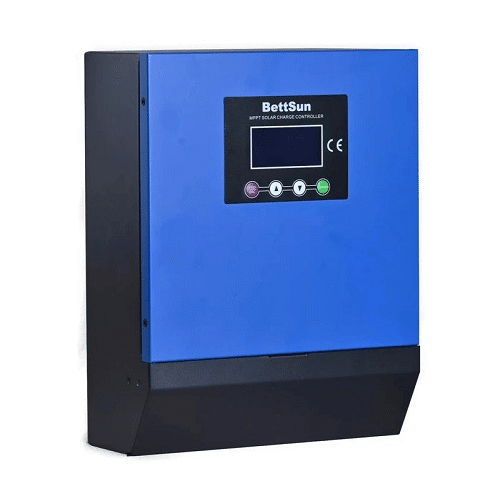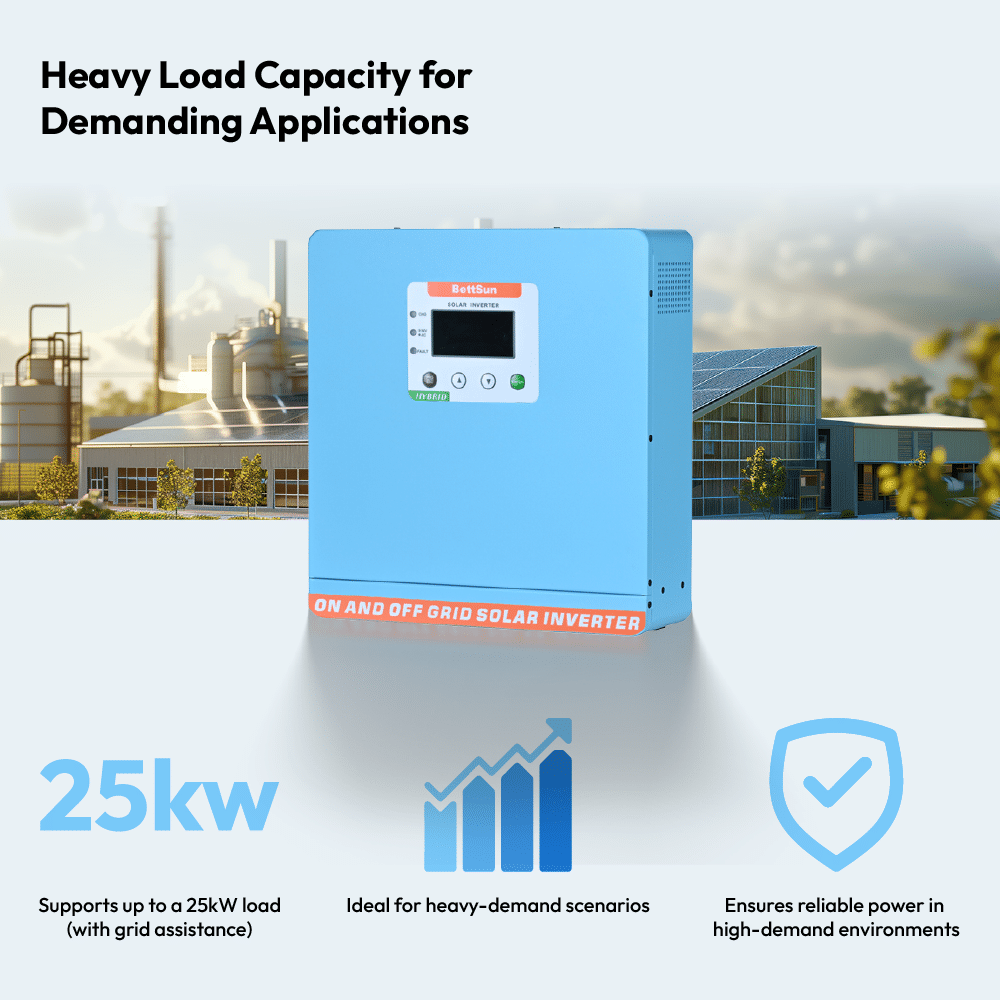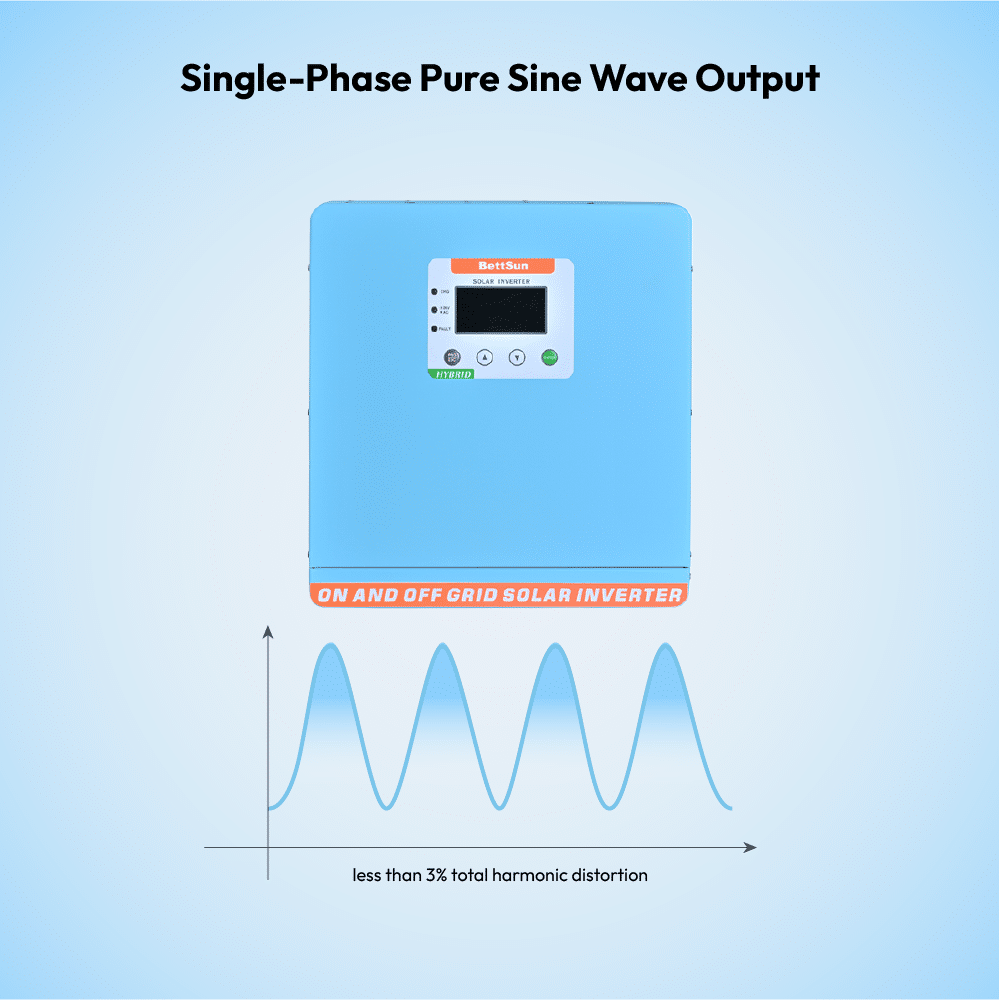You’ve picked a shiny 5kW solar inverter for your roof, but one big question remains: how many panels do I actually need to feed it? Guides online toss numbers around like confetti—eight, ten, thirteen. No wonder new solar fans feel dizzy. Quick answer:
- Count panel watts (300–450 W each).
- Divide 5000 W by one panel’s watts.
- Expect 8–13 panels in most cases.
- Add space and sunlight checks to be sure.
- Batteries optional—your 5kW solar inverter works fine without them.
Stick with me: we’ll cover panel math, sunlight tricks, hybrid solar inverter options, advice from top solar invert manufacturers, and a handy table. By the end, choosing the right count will feel as easy as pie.
5kW Solar Inverter: Calculation Made Simple
Before climbing the roof, you need a clear number. Your 5kW solar inverter can flip 5000 watts of DC power into usable AC. Panels come in different watt ratings, so divide 5000 by each panel’s watt value to get a count. Shade, tilt, and roof area tweak the final pick. Matching panel output to inverter size keeps voltage in the sweet spot and avoids wasted sunshine.
300 W Panels: Bigger Stack
Using 300 W panels means 5000 ÷ 300 = 16.6. Round down to 16 for safety, but many aim for 17 to cover cloudy loss.
370 W Panels: Mid-Pack Choice
At 370 W, the math is 5000 ÷ 370 ≈ 13.5. Most installers place 14 panels to stay within the inverter limit without clipping too often.
450 W Panels: Lean and Mean
High-efficiency 450 W modules need only 5000 ÷ 450 ≈ 11.1. A set of 11 fits well, saving roof space for later upgrades.
Sunlight Hours Do The Final Tweak
A desert home gets more sun than a foggy coast. Peak Sun Hours (PSH) tell how much “full noon” light you get on average daily. An area with 6 PSH lets fewer panels hit 5 kWh output than a site with 4 PSH. Good installers adjust panel count upward by 10–20 % in low-sun zones to keep your 5kW solar inverter happy year-round.
Info: PSH maps are free on most weather sites—check yours before buying panels.
Roof Space And Panel Size
Each panel eats about 1.8 m². Eleven 450 W panels need around 20 m². Fourteen 370 W units need 25 m². Always leave 10 cm gaps for airflow. Venting keeps both panels and your solar inverter cooler—cooler gear means more power.
Fact: Overheated inverters can drop efficiency by 2–3 %, trimming yearly output.
What About A Hybrid Solar Inverter?
A 5kW solar inverter runs like a grid-tie unit but adds battery ports. It still needs the same DC power—about 5 kW. Panel math stays the same: 8–13 modules, depending on wattage. Adding batteries later unlocks nighttime use and backup power, but panels and inverters remain friends either way.
Quick Tip: Choose a hybrid inverter model now—even without batteries—to save on future swap costs.
Advice From Solar Invert Manufacturers
Top solar invert manufacturers suggest oversizing panels by up to 130 % of the inverter rating. For a 5kW solar inverter, that means up to 6.5 kW of panels. Oversizing boosts dawn and dusk harvest without harming equipment—just confirm warranty limits.
| Panel Wattage | Base Count | 130 % Count | Roof Area Needed |
| 300 W | 17 | 22 | 40 m² |
| 370 W | 14 | 18 | 32 m² |
| 450 W | 11 | 15 | 28 m² |
Success: Oversize carefully: stay under the inverter’s max DC voltage and current specs.
String Layout And Voltage Match
Panels wired in series to hit the inverter’s voltage window (say 120–500 V). A string of ten 40 V panels equals 400 V—perfect. Split arrays help the east and west roofs shine. Most 5kW solar inverter models have two MPPT channels, ideal for mixed roof angles.
Clipping: When Panels Push Too Hard
On rare, very bright days, panels may exceed 5 kW. The inverter “clips” extra juice, flattening the curve. Annual loss is small (1–3 %) and often worth the larger yearly gain from more panels. 5kW solar inverter manufacturers call this “authorized oversizing.”
Warnings: Massive oversize (>150 %) can void warranties—read the fine print.
Batteries: Optional Boosters
Your hybrid solar inverter runs fine alone, but slotting batteries later stores noon excess for evening lights. Lithium packs add 5–10 kWh of reserve. During outages, the inverter isolates from the grid and feeds key loads—fridge, Wi-Fi—within milliseconds.
Table: Quick Panel Picks For A 5 kW Solar Inverter
| Panel Watt | Panels Needed | Pros | Cons |
| 300 W | 17 | Low price per panel | Takes up most roof space |
| 370 W | 14 | Balance of price and space | Mid-range availability |
| 400 W | 13 | Common stock | Slight premium cost |
| 450 W | 11 | Saves space | Requires top roof sun |
Future Proofing With Hybrid Options
A forward-thinking homeowner pairs a hybrid solar inverter with an extra roof spot for two more panels. When panel efficiency rises, you can swap or add modules, letting your 5kW solar inverter run closer to its limit for longer into the evening.
Suggestion: Add a spare conduit from the roof to the inverter now; you’ll thank yourself later.
Conclusion
Counting panels for a 5kW solar inverter is easy math: divide 5000 by one panel’s wattage, then check sunlight and roof space. That’s 8–13 panels for most homes. Oversize up to 130% for extra morning and evening juice. A hybrid solar inverter works fine without batteries but shines brightest with storage later. Listen to solar invert manufacturers, plan for shade, and your system will power breakfasts and binge nights for decades.
FAQs
Can I mix panel brands with one 5 kW inverter?
Yes, if voltage and current match, stick to the same watt class for best tracking.
Will adding batteries change my panel count?
No, battery size is separate; your 5kW solar inverter still wants 5 kW DC.
Do higher-watt panels cost more per watt?
Often similar, savings come from fewer rails and clamps.
How much roof tilt is best?
Angle equals local latitude for year-round balance.
Is cleaning panels hard?
A soft brush and hose twice a year keeps output high.






